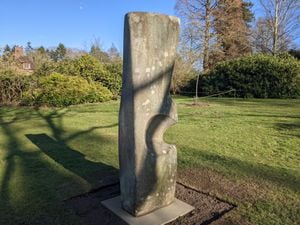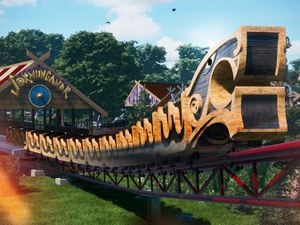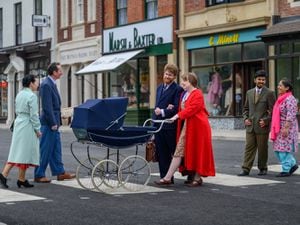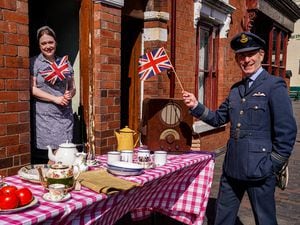Modern artist's work added to collection at Dudmaston Hall
An abstract sculpture by a famous Shropshire artist will be added to a major collection of modern art at an historic tourist attraction close to where he used to live.

The Blade, a two-metre-tall stone sculpture created by Anthony Twentyman (1906–1988), was commissioned by Sir George Labouchere, husband to Rachel, Lady Labouchere, who was the last owner of Dudmaston Hall, the National Trust attraction at Quatt, near Bridgnorth.
Wolverhampton-born Twentyman, who moved to live in nearby Claverley, designed several sculptures for the garden and galleries at Dudmaston in the late 1960s and early 70s.
Broadcaster and art historian Nicholas Tresilian inherited The Blade from his close friend Twentyman and has chosen to donate the piece ‘in recognition of Dudmaston Hall’s connection to the artist’.
Mr Tresilian said Twentyman was interested in all things mechanical and a ‘passionate driver of fast cars’.
He said: “The Blade, albeit in the direct stone carving tradition of modern British sculpture, is strongly reminiscent in outline of the turbine blade of a jet engine, linking the contours of the British landscape with the industrial revolution.
“Dudmaston is a beautiful 17th-century house, set in a rolling Shropshire countryside, and with an outstanding collection of modern art, so it is an exciting destination for people to enjoy a collection of Twentyman’s art.”
The Blade is now on display in the garden at Dudmaston Hall, which is one of the leading historic houses where visitors can view a 20th-century art collection.
Twentyman was fascinated by texture, light and shade and natural forms. He used bones, pebbles and water to inspire the shapes used in his sculptures.
Dudmaston’s other works by Twentyman include his first sculptural contribution to the property, The Watcher, which majestically overlooks the beautiful lake on the estate, while some of his other works are also on display in the grounds.
The Blade is positioned in the American Garden above the lake, punctuating a view down towards The Watcher and linking in with his other major pieces in the grounds, including The Spaceframe, Dog Memorial and Abstract Form.
As well as Twentyman’s outdoor sculptures, there is a collection of nine smaller sculptures and maquettes in the modern art galleries at Dudmaston, alongside other works by well-known 20th-century modernists such as Barbara Hepworth and Henry Moore, who met and very much influenced Twentyman.
National Trust curator Sarah Kay said: “Sir George had a connoisseur's eye for living artists and commissioned a number of works by Twentyman.
“When interviewed in 1987, he wished ‘that more people would consider the present generation of artists – and not just the safe ones – when they are adding to their collections in old properties’.
“His collection of modern art is most unusual in a historic country house, displayed as the collector intended, and is one of Dudmaston’s principal attractions.”
John Chu, National Trust curator for pictures and sculpture, said: “The Blade is a wonderful addition to the grounds of Dudmaston – a place that Twentyman knew so intimately.
“Much like his contemporaries Henry Moore and Barbara Hepworth, he responded to the natural forms of the landscape through his art, so it is particularly gratifying that visitors will be able to enjoy the work in such a beautiful setting.”
Twentyman’s work features in an exhibition called The Modern Movement, which explores British modern and contemporary art from prominent artists of the early 20th century, including Barbara Hepworth, Henry Moore and Ben Nicholson.
The grounds of Dudmaston Hall are open from March to October and the modern art galleries are open Sunday to Thursday from March 13 to November 27.
Anthony Twentyman was born in Wolverhampton in 1906. As a young man he learned the skill of direct carving into wood. During the Second World War, Twentyman was one of the many Allied prisoners of war forced to work as slave labour on the Burma railway.
Upon returning to his family home in Claverley, he embarked on direct carving into stone and became a distinguished pioneer in the field of post-war British abstract sculpture.
For further information visit nationaltrust.org.uk/dudmaston





